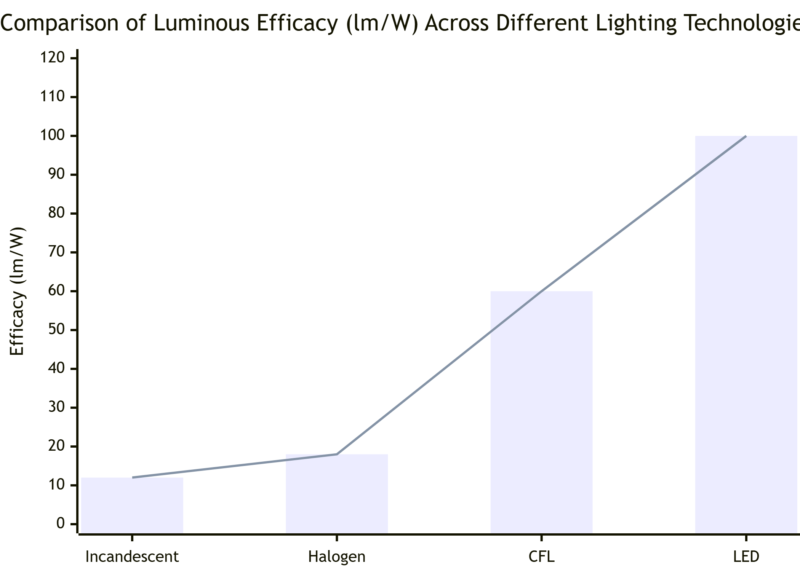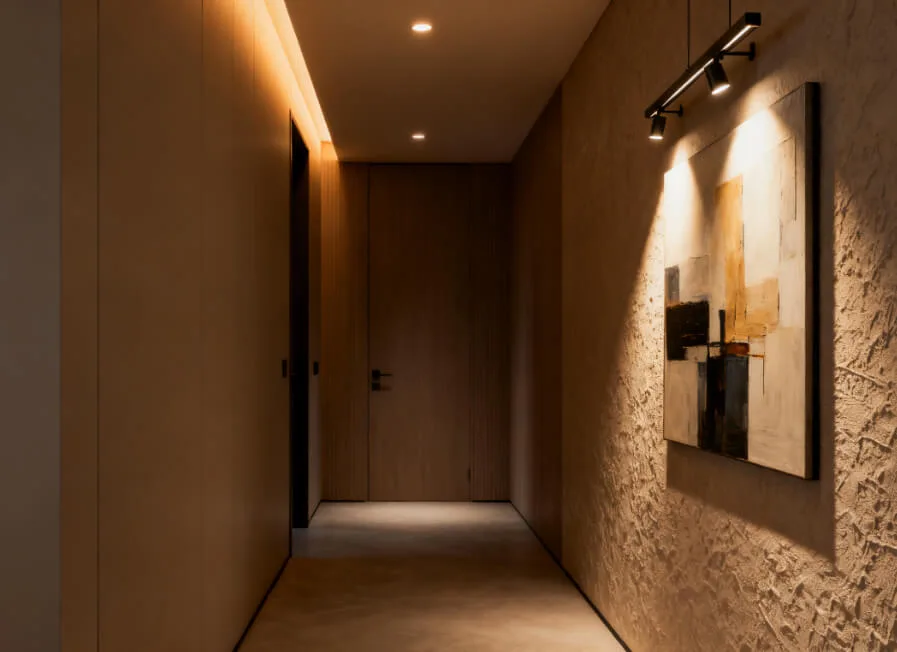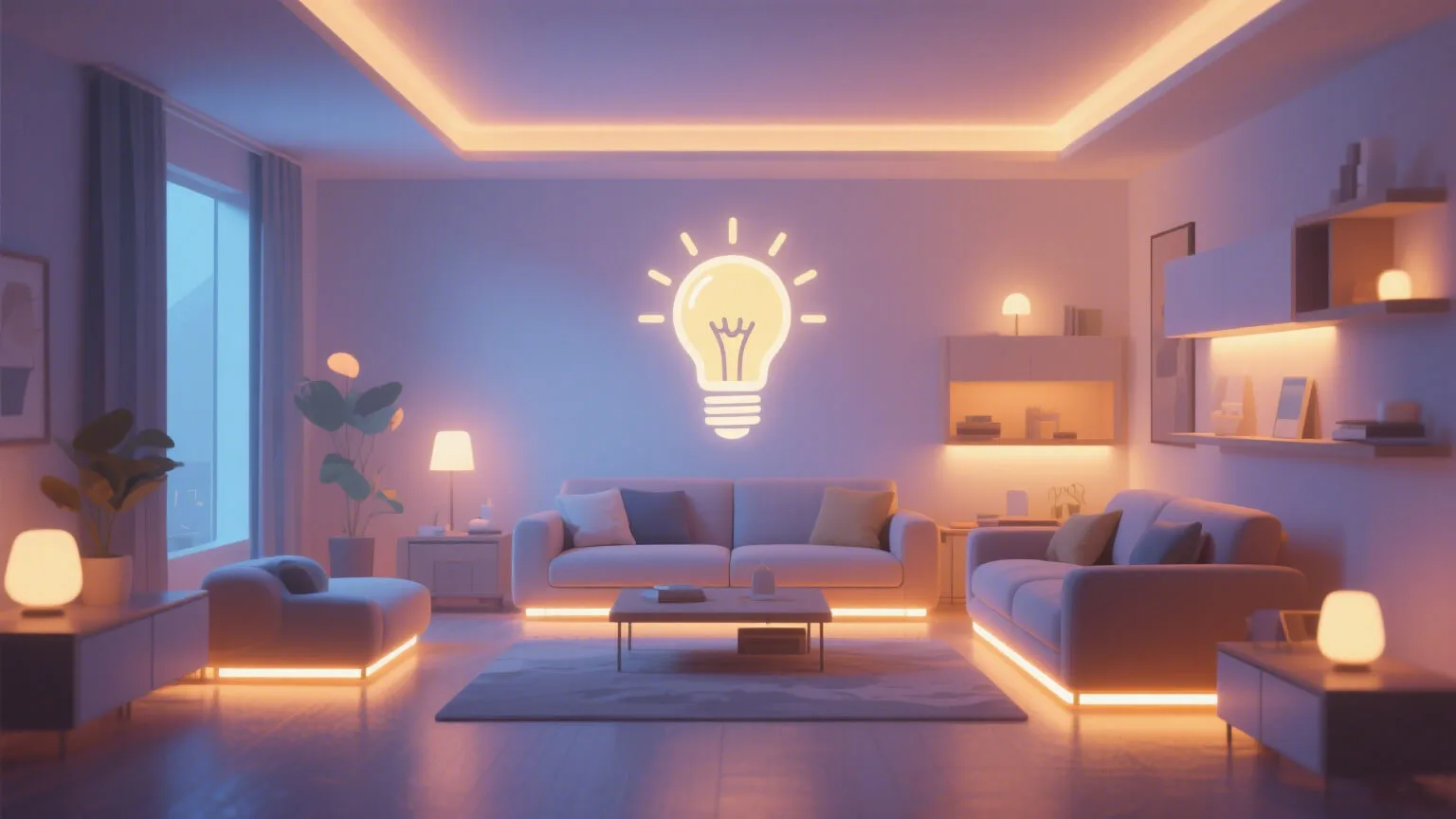“Choose lights based on wattage; higher wattage means brighter.” — This deeply ingrained notion is long overdue for a complete overhaul. Today, with LED lighting firmly mainstream, wattage (W) is no longer the “ruler” for measuring light brightness. The true parameter that determines how bright a light is, is called Lumens (lm).
This article will thoroughly clarify the relationship between lumens and wattage, turning you into an expert in lighting selection.
Part 1: Setting the Record Straight — What Exactly is Wattage (W)?
Watt (W), is a standard unit of power. It measures how much energy an electrical device consumes per unit of time.
-
A simple analogy: Wattage is like a car’s fuel consumption. A car that “uses 10 liters per 100 km” requires 10 liters of gasoline to travel that distance. Similarly, a light bulb with a “10W power” means it consumes 10 watt-hours of electricity for every hour it operates.
-
Key conclusion: Wattage is directly related to your electricity bill, not the brightness of the light. It answers the question: “How much electricity does this light consume?”
Part 2: The Gold Standard for Measuring Brightness — What are Lumens (lm)?
Lumen (lm), is the unit of luminous flux. It measures the total quantity of visible light emitted in all directions by a light source—in other words, the total brightness perceivable by the human eye.
-
A simple analogy: Lumens are like the water flow from a tap. The wider the tap is opened, the more water flows out per second. Similarly, the higher the lumen value of a light, the more visible light it emits.
-
Key conclusion: Lumens are the only, true metric for measuring the brightness of a light. It answers the question: “How bright is this light?”
Part 3: Efficiency is Key — How Does Efficacy (lm/W) Connect Wattage and Lumens?
Since wattage represents “input” (energy consumption) and lumens represent “output” (brightness), the key connecting them is efficiency. In lighting, this efficiency has a technical name: Luminous Efficacy, measured in lumens per watt (lm/W).
Efficacy = Luminous Flux (Lumens) / Power (Watt)
This formula means: the number of lumens produced per watt of electricity consumed. Higher efficacy signifies that the light fixture converts electricity into light more efficiently, making it more energy-saving.
To help you understand this efficiency revolution clearly, see the efficacy comparison of different lighting technologies below:
This comparison visually shows:
-
Incandescent Bulbs: Most electrical energy (over 95%) is wasted as heat, making them extremely inefficient.
-
LED Lights: The core technology offers extremely high photoelectric conversion efficiency. Most electrical energy is used to produce light, hence their leading efficacy.
A vivid example:
To achieve a brightness of 800 lumens (equivalent to a traditional 60W incandescent bulb):
-
A 60W incandescent bulb consumes 60 watts of power, with an efficacy of about 13 lm/W.
-
An 8W LED light can achieve the same, with an efficacy of 100 lm/W.
This means the LED light uses less than 15% of the energy of the incandescent bulb to produce the same brightness! This is the huge advantage brought by high efficacy.
Part 4: Practical Guide — How to Choose Lights Based on Lumens and Wattage?
Next time you buy a light bulb, follow these steps to ensure you choose correctly:
-
Step 1: Determine the required lumens (brightness)
Forget wattage. First, think about how bright you need it. Here is a reference table:Application Scenario Suggested Lumen (lm) Range Equivalent Old Incandescent Wattage Bedside lamp, ambient lighting 200 – 400 lm 25W – 40W Kitchen countertop, study reading lamp 500 – 800 lm 60W Living room main lighting, dining room 700 – 1200 lm 75W – 100W Main lighting for large areas 1300 lm+ 100W+ -
Step 2: Compare wattage (energy consumption)
After finding several lights whose stated lumen values meet your needs, compare their wattages.
Choose the one with the lower wattage. This means it is more energy-efficient for providing the same brightness, leading to lower long-term electricity costs. -
Step 3: Comprehensively check other parameters
-
Color Temperature (K): Determines the light’s color. Warm light (2700K-3000K) is cozy; cool light (4000K-6500K) is bright.
-
Color Rendering Index (CRI): Determines color authenticity. Higher is better (建议选择CRI >80,优选>90).
-
Conclusion
Let’s return to the initial question: Is a higher wattage always brighter?
The answer is no. For modern LED lights, wattage represents energy consumption, and lumens represent brightness.
Selection mantra: Compare brightness by Lumens (lm), compare energy savings by Wattage (W), compare efficiency by Efficacy (lm/W).
Mastering this knowledge of modern lighting allows you to break free from misconceptions, avoid paying for unnecessary “high wattage,” and instead precisely choose lights that are truly bright, efficient, and comfortable to create your ideal lighting environment.




